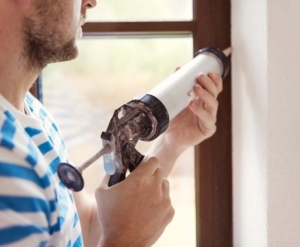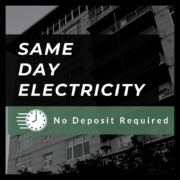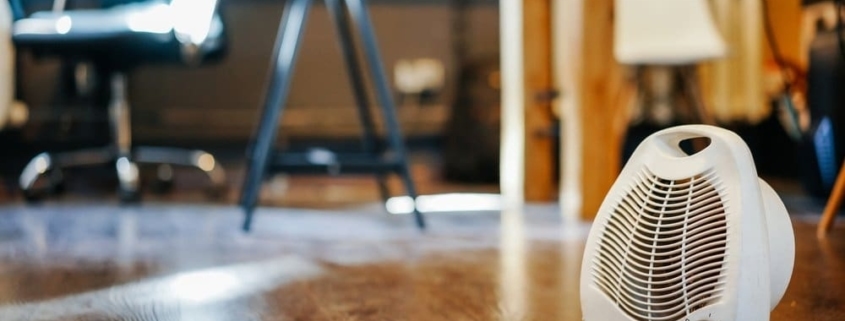Last Updated on November 1, 2022 by Mary Pressler

Stay Warm on a Budget – 5 Apartment Heating Hacks
During winter, space heating is the largest energy expense for most homes, apartments and commercial buildings. The indoor temperature can be increased by simply setting the thermostat higher, but this greatly raises your energy bills. A smarter approach is finding ways to keep the heat inside as long as possible, without spending more on electricity or gas.
When energy consultants inspect buildings, they use three complementary strategies to reduce the cost of space heating:
- Equipment upgrades: Newer and more efficient heating equipment delivers the same heat output with a smaller energy input. Depending on the type of heater, the input is normally electricity or gas.
- Smart Thermostats: Adding smart controls to the heating system helps avoid heat waste. Controls such as Nest and Ecobee prevent overheating, and they can also be configured to allow a lower temperature when everyone is away.
- Preventing heat loss from the building: When a building cannot keep heat inside effectively, space heaters must work harder to sustain a comfortable temperature. However, there are many viable measures to reduce heat loss from buildings.
This article describes simple ways to weatherproof your apartment, at low cost and with minimal hassle.
1. Find and Seal Air Leaks Around Your Doors and Windows
Air leaks represent a major waste of energy, since cold outdoor air can leak in while your building loses warm air. However, finding air leaks is tricky because they are not visible.
Energy consultants use advanced methods like thermal vision to detect air leaks in buildings. However, you can find many of them without using sophisticated devices by performing a simple DIY Energy Audit.
 How to Fix Air Leaks at Home
How to Fix Air Leaks at Home
- Consider that many air leaks are located around the edges of doors and windows. You can use your hand to feel cold spots, and you can use an incense stick to detect air drafts.
- Once you have found several air leaks, they can be sealed with materials that are found in any hardware store.
- Use caulking for air leaks that are found between non-moving elements, such as a door frame and a wall.
- Use weather stripping for air leaks between moving parts, such as a window and its frame.
Sealing air leaks also makes your apartment more comfortable, since cold air drafts from outside are blocked. If there are areas in your apartment that stay cold no matter how high you set the thermostat, air leaks are a likely cause.
Caulking and weatherstripping is a cheap and easy enough for a weekend do-it-yourself project.
2. Keep the Curtains Closed
Buildings lose plenty of heat through their windows. If you compare an uninsulated wall and a single-pane window, the heat loss per square foot is around three times higher for the window.
Even in buildings with adequate wall insulation and energy efficient windows, walls normally provide better insulation than windows.
Closed curtains create air gaps in front of windows, reducing heat loss from inside the building.
If you want natural lighting, there is no need to open all the curtains in your apartment. Tip: In the northern hemisphere, south-facing windows get the most sunlight throughout the year.
3. Reverse Your Ceiling Fans
Due to the physical principle of buoyancy, warm air gathers near the ceiling while cold air gathers near the floor. However, a fan spinning in reverse pulls the cold air upward, moving the warm air towards the lower portion of a room.
- This helps improve the efficiency of your space heater, while improving comfort.
- Having the warm air trapped near the ceiling is a waste of energy, since you cannot feel the full heating effect.
This measure is only effective if you have a conventional heating system with air ducts, which deliver warm air near the ceiling. Some apartments have radiant floor heating systems, which release heat from below.
4. Use a Portable Space Heater
Many apartments have central heating systems, which means you must heat the entire dwelling to reach a specific temperature. With a portable heater, you can increase the temperature of a specific room or area, setting the thermostat lower for the central heating system.
Note: Deactivating the central heating system completely is not recommended, even if you have a portable heater. If the rest of your apartment gets too cold, you may have issues with frozen pipes and the ice can also damage your plumbing fixtures.
5. If You Use Window AC Units, Cover Them
Window unit air conditioners are affordable, but they have two major disadvantages:
- They are very inefficient, so you can expect a high electricity bill during summer.
- They create a gap in your building envelope, causing heat loss in winter and heat gain in summer.
If your apartment has a window air conditioner, you can use caulking to seal any air gaps around its edges. You should also install a wall cover for your air conditioner, and keep it closed during winter. If an unused air conditioner is left exposed, plenty of cold air will flow through the unit into your apartment.
Bonus Tip – Close Your Chimney
Many apartments and townhomes have chimneys that are only decorative. However, a chimney is a tunnel between the warm indoor air and the cold outdoor air. During winter, an open chimney will cause a constant heat loss from inside your property, increasing your heating bills. If you have a chimney that is used only for decorative purposes, make sure it’s closed.
 Warm Up to Texas Electricity Savings
Warm Up to Texas Electricity Savings
Save money when you choose Quick Electricity for your apartment utilities. Current energy discounts include new customer bonuses and free power weekends.
Need help choosing an electricity plan in Texas? Call 877-509-8946 for assistance.

